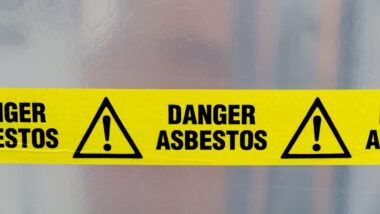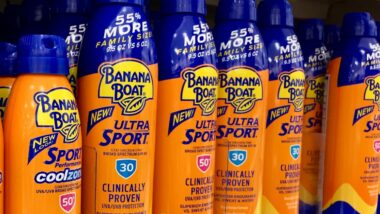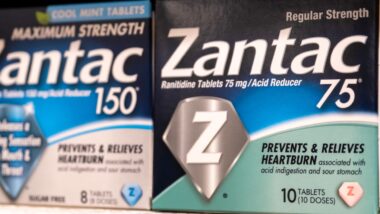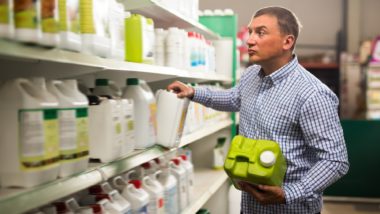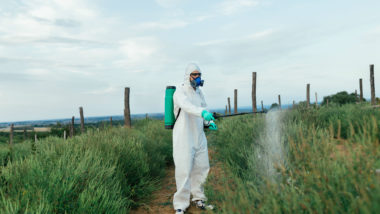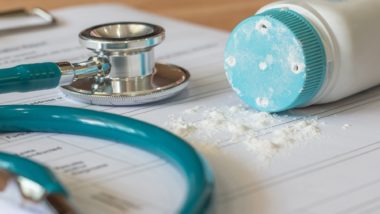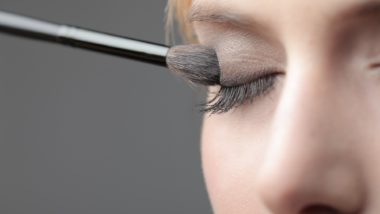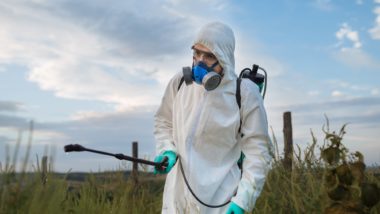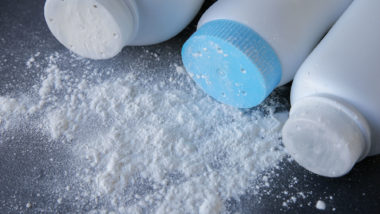Top Class Actions’s website and social media posts use affiliate links. If you make a purchase using such links, we may receive a commission, but it will not result in any additional charges to you. Please review our Affiliate Link Disclosure for more information.
A recent study organized by the Food and Drug Administration (FDA) found asbestos in roughly 20 percent of 52 talc-based products available on the market today, including talc makeup. While the FDA says these results don’t necessarily reflect on the number of asbestos-positive products in the marketplace, it is a reason for concern.
Talc-based products have been linked not only to mesothelioma among miners, but also ovarian cancer among women who use the powder for hygiene purposes.
Reuters released an investigative report regarding the fact that Johnson and Johnson (J&J) has been facing lawsuits over the carcinogenic effects of their baby powder for decades. An examination of internal documents revealed that executives with the company knew about the presence of asbestos in their baby powders as long ago as 1957. Still, when lawmakers were considering limiting asbestos in cosmetics, J&J told regulators that no asbestos had been found in their products between 1972 and 1973.
J&J failed to disclose that three tests done by three independent labs between 1972 and 1975 found traces of asbestos in talc products sold by the company, one even reporting “rather high” levels.
According to ConsumerNotice.org, talc is a natural mineral that is mined and subsequently crushed into a powder. Unfortunately, talc and asbestos are often found together in the earth, so the risk of contamination is high.
Talc makeup
While it is arguably most commonly found in baby powder, talc is actually found in a wide variety of products. From lotions and lipstick to deodorants and shower products, talc is practically ubiquitous in health and beauty products. According to ConsumerNotice.org, talc is added to cosmetics to create a silky texture and absorb moisture. It also helps keep makeup from caking and gives the makeup an “opaque finish”.
Unfortunately, the FDA doesn’t require testing and approval of cosmetic ingredients with the exception of color additives. The FDA states that, while cosmetics must have proper labeling, the safety information regarding that product does not have to be disclosed. Instead, the safety of these products is entrusted to the manufacturers themselves.
The FDA must have scientific proof that a talc makeup product is harmful before they can take any action against the product’s manufacturer. According to the New York Times, although the Personal Care Products Council declared that all talc-based products must be free of asbestos in 1976, there is no way for this standard to be enforced.
Talc in products and health concerns
The American Cancer Society states that while few studies have linked talc to cancer, there are reasons to doubt the methods taken by those studies. Many women have successfully sued J&J for ovarian cancer that they say was caused by genital-area baby powder use, but ovarian cancer is still uncommon. Studies may not be able to find enough subjects to make reliable judgments. Studies may also rely on subjects’ memory of baby powder use, something which can lead to biased results.
The government maintained MedlinePlus states that the use of talc-based products can lead to respiratory issues if the substance is inhaled. According to ConsumerNotice.org, other common symptoms of talc poisoning include blisters, eye and throat irritation, drowsiness, weakness, seizures, coma, decreased urination, low blood pressure, twitches, bluish skin, and diarrhea and vomiting. Baby powder has also been known to cause death in babies and children when aspirated.
In addition to the possible negative health side effects associated with talc inhalation or ingestion, ingesting talc that has been contaminated with asbestos may be especially harmful. Asbestos is a known carcinogen, meaning that it can cause cancer in humans, most notably mesothelioma and lung cancer. Unfortunately, it may take years or decades after exposure to asbestos before the symptoms of this cancer emerge and the condition can be diagnosed, meaning that it is often too late for victims of the cancer to eliminate their risk factors.
Due to the way the condition progresses, it is often not diagnosed until the disease is in its later stages, when it may be life threatening.
As asbestos is a fibrous mineral that is often mined in close proximity to talc, many talc products may be contaminated with the dangerous substance.
How does asbestos cause cancer?
When asbestos particles are ingested or inhaled through close contact with baby powder or talc makeup, these particles may settle in the lungs or the mesothelium surrounding the internal organs. Over time, these particles cause irritation to the surrounding tissue, resulting in scar tissue and inflammation. Eventually, this inflammation may become cancer.
Asbestos-related cancers are often deadly, resulting in approximately 12,000 to 15,000 deaths every year in the United States. While many of these deaths are due to occupational asbestos exposure experienced by people who work in contact with the material, such as carpenters, electricians, railroad workers, and roofers, many people may also be unknowingly exposed to the material through common household products or makeup made up of contaminated talc.
How to avoid talc based products
To avoid using talc products, the first thing you should do is check labels. Talc has to be listed among the ingredients of any product in which it is used. It is listed as talc, talcum powder, cosmetic talc, and magnesium silicate. Watch out for any of these terms in the ingredient lists of your purchases.
To avoid using baby powder as a parent, the NYT recommends changing your child’s diaper frequently and using oil-based ointments to treat and prevent rashes.
Cosmetics companies dropping talc
In June, Reuters found several big cosmetic companies had started to phase out the use of talc in their products. Prestige brand Chanel is no longer including talc as an ingredient in its loose face powders, and the company stopped making a Chanel No. 5-fragranced talc-based body powder. Revlon Inc no longer uses talc in any of its merchandise made for the body.
Reuters reported L’Oreal SA said the company is looking for something different to replace talc makeup products, but so far, nothing tested has proven to have the same qualities.
Chanel reportedly still uses talc in some pressed powders, eye shadows and blush cosmetics, but a spokeswoman said in an email to Reuters that all of its talc is “selected according to strict purity criteria, fully complies with current global regulations, and is safe under standard conditions of cosmetic use.”
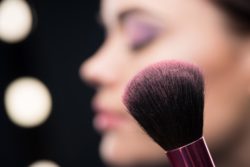
Despite talc’s usefulness, a broad shadow has fallen over the talc industry as more and more lawsuits point to the mineral, which at times has been tested and found tainted with asbestos, as the alleged cause of ovarian cancer and mesothelioma cancers of the lung or abdomen. For example, Chanel faces allegations that asbestos in it’s talc-based bath products lead to one woman’s mesothelioma.
Talc free powders
For adults and teenagers, the New York Times suggests using cornstarch as an alternative to baby powder. There are also talc-free powder options that still smell like baby powder, organic options, cruelty-free options, and paraben-free options, according to reporting by Medium. Most talc-free powders utilize cornstarch, but you can also find tea tree oil-based powders, cocoa butter and jasmine-based powders, powders that use aloe vera, tapioca-based powders, and even anti-bacterial powders.
In August 2022, Johnson & Johnson announced that it would stop global sales of talc-based baby powders. Instead, all Johnson & Johnson baby powders will be made with cornstarch as a talc alternative.
Do YOU have a legal claim? Fill out the form on this page now for a free, immediate, and confidential case evaluation. The attorneys who work with Top Class Actions will contact you if you qualify to let you know if an individual lawsuit or class action lawsuit is best for you. [In general, baby powder cancer lawsuits are filed individually by each plaintiff and are not class actions.] Hurry — statutes of limitations may apply.
ATTORNEY ADVERTISING
Top Class Actions is a Proud Member of the American Bar Association
LEGAL INFORMATION IS NOT LEGAL ADVICE
Top Class Actions Legal Statement
©2008 – 2024 Top Class Actions® LLC
Various Trademarks held by their respective owners
This website is not intended for viewing or usage by European Union citizens.
Get Help – It’s Free
Join a Free Baby Powder Cancer Class Action Lawsuit Investigation
If you used Johnson’s Baby Powder, Shower to Shower, or another talcum powder product and were diagnosed with ovarian cancer, you may have a legal claim. Family members of loved ones who died of ovarian cancer can also join. Submit your information now for a free case evaluation.
An attorney will contact you if you qualify to discuss the details of your potential case at no charge to you.
PLEASE NOTE: If you want to participate in this investigation, it is imperative that you reply to the law firm if they call or email you. Failing to do so may result in you not getting signed up as a client or getting you dropped as a client.


